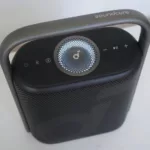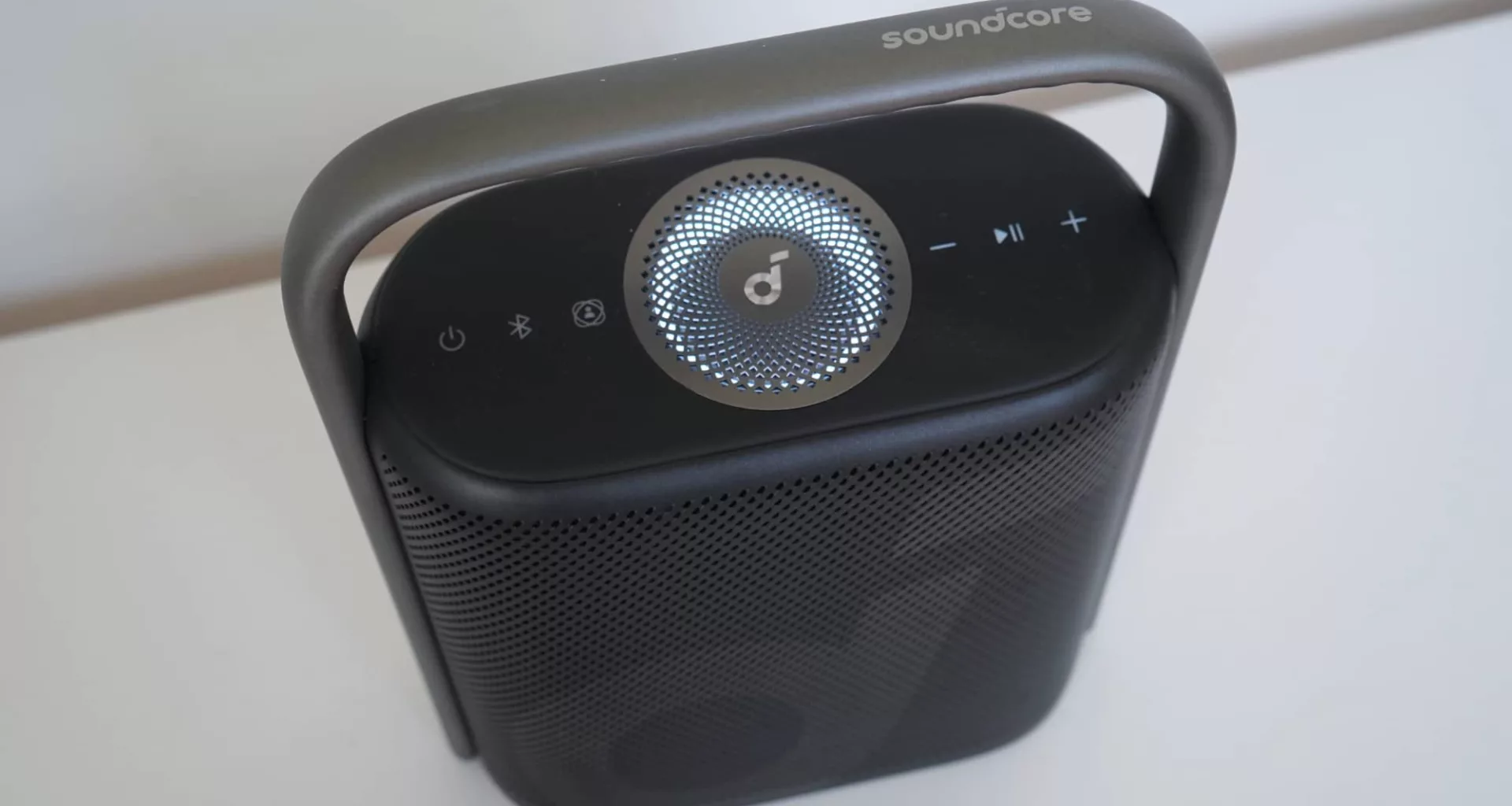Quick review
The good
The not-so-good
A speaker with a handle made to go, Anker’s Soundcore Motion X500 doesn’t just bring stereo, but also spatial, in a sub-$300 speaker.
Speakers. Everyone has them, and for the past decade or so, they’ve become the defacto gift when you’re looking to give something to someone who loves to take their sound to go.
Over that past decade since wireless speakers have become more accessible, we’ve seen an assortment pop up, though they often tend to come with set design and feature choices: they’re often water resistant, loud, and tend to cater to 360 degree sound, but if not, they’ll be mono, and few will be dissatisfied with that.
It’s rare to find challengers moving on from that template, but that could be what Anker’s audio brand Soundcore is doing. In the Motion X500, there’s not only more than one driver, but also an upward firing driver, as the speaker jumps into spatial with open arms.
That’s not only a first for us in mobile speakers, but in line with the company’s willingness to try something different.
With its recent Liberty 4 NC and Space A40 earphones before those, Soundcore has signalled that not only can it produce cost-effective gear to rival competitors, but do it with flair and an app, things that less expensive competitors don’t often get. And it’s with this vibe that Soundcore is jumping into wireless speakers, too.
The Soundcore Motion X500 is a little bigger than what you’d expect a sub-$300 wireless speaker to cost, and even comes with a little more sound than you might expect it to deliver, as well. Is Soundcore offering a true competitor to consider?
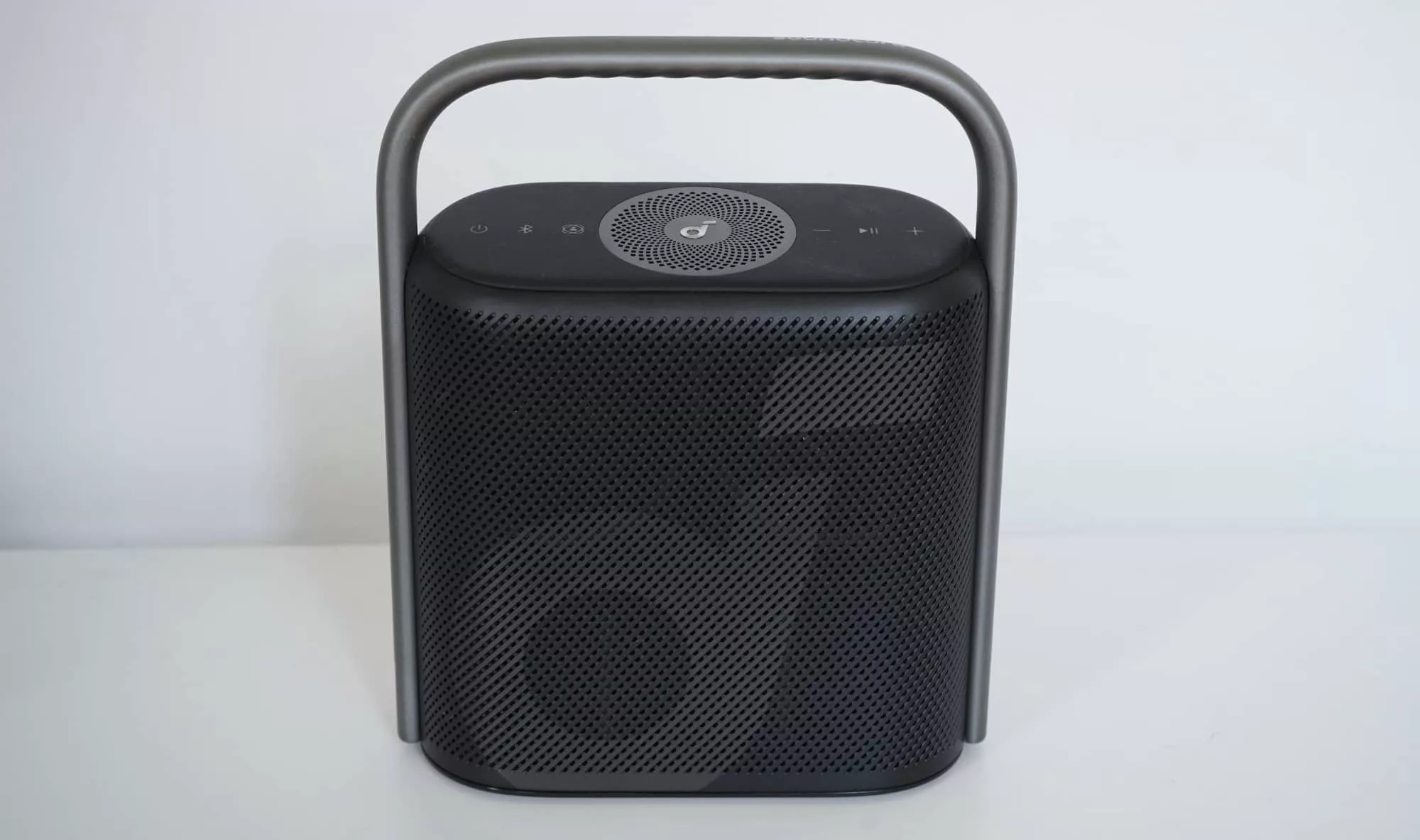
Design and features
Clearly a speaker, the X500 is all grill and sound, and doesn’t try to hide anything in its style. It’s basically a speaker, but with some extra niceties for good measure, such as a light-up extra grill up top for an upward firing speaker flanked by controls, as well as an easy to hold handle that is fixed in place.
The Motion X500 more or less says what it’s for in the name: “motion”, or to take to-go, which is what that handle is for.
And look, while it’s clearly a speaker, it’s easy enough on the eyes without feeling over-designed.
The Soundcore X500 is clearly a speaker, obvious from the grill somewhat hiding two drivers powered by 40W, while the third is up top. It also comes with support for a few codecs, including HiRes Audio’s LDAC as well as AAC, so if you have a high enough quality audio, you can play it on through. We suspect most folks will send Spotify its way, but it should be able to handle some Apple Music lossless and Tidal HiFi love.
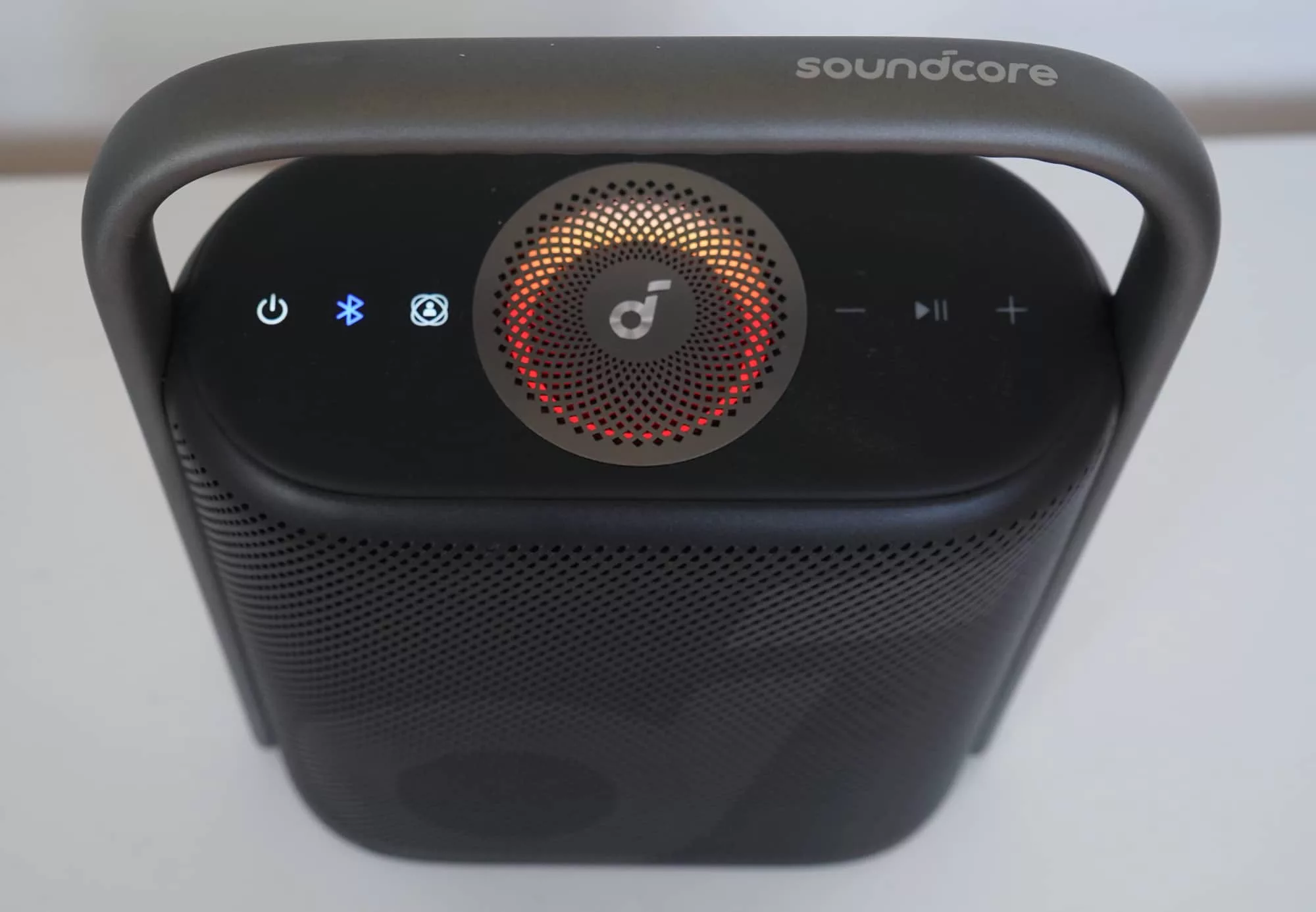
In-use
A handle will let you move the X500 speaker, but you can’t move the handle at all. Fortunately, the buttons for using the speaker are in a logical position, found directly underneath that handle, with an app to help you tweak things if need be.
The Soundcore app has long been a decent little addition, and much like we’ve seen on the company’s earphones, you can use it to change the sound and trigger settings whether you’re on iOS or Android.
However, this speaker is just a Bluetooth speaker, with no other input on offer. There’s no AirPlay or auxiliary port, even if there is a USB-C charge port at the back covered by a water-resistant rubber seal. Keep that closed to keep your speaker deflecting water, otherwise the IPX7 water resistance rating will be worth close to nothing.
With all that out of the way, you simply need to turn on the speaker, connect it to a device of choice, and you are good to go.
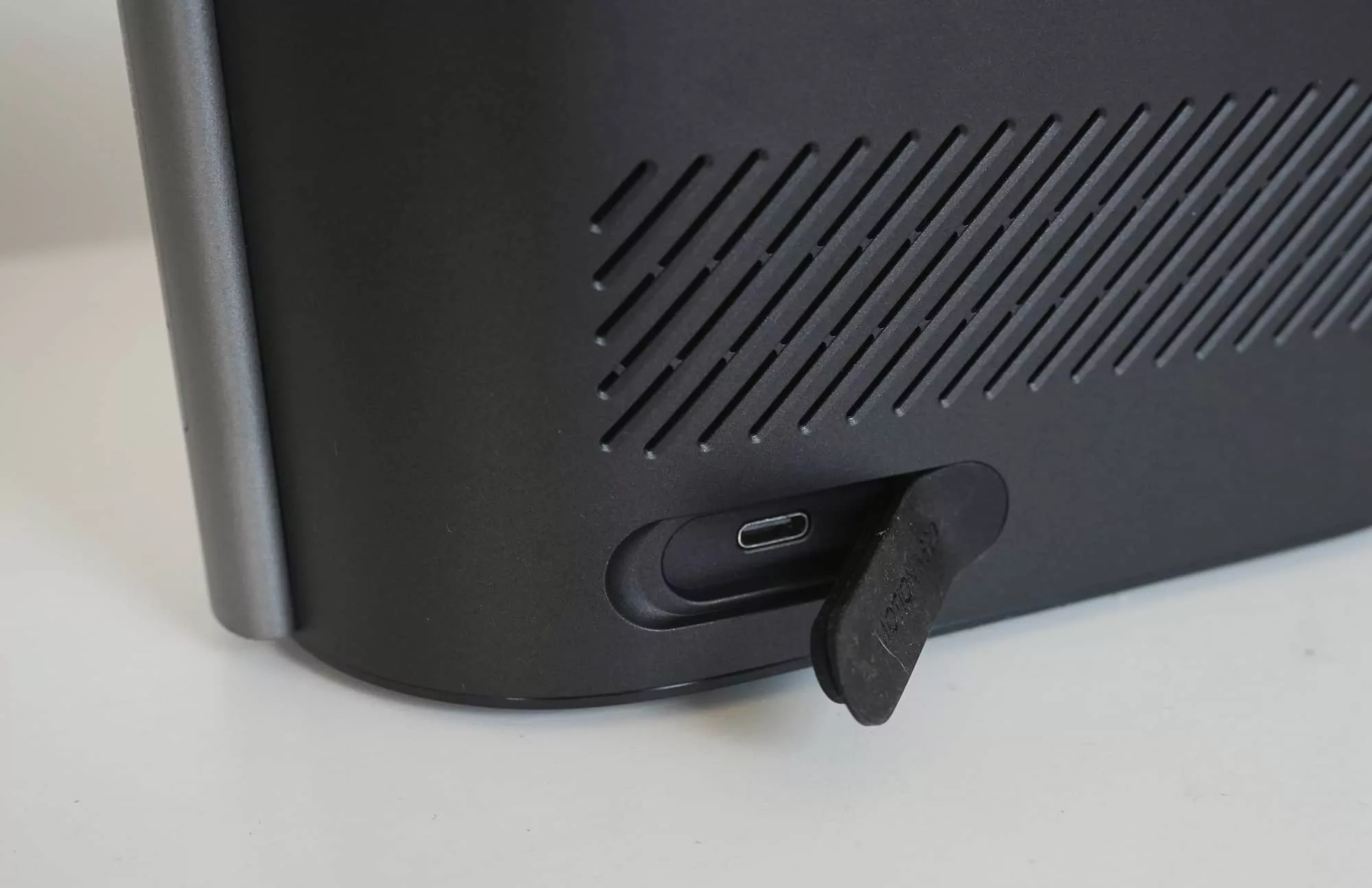
Performance
As usual, we’re testing a speaker with our Pickr Sound Test playlist, which you can check out for yourself, covering a good assortment of genres and styles.
For the purposes of this review, we’ll run it on the standard stereo sound before jumping into spatial, because there are two modes in the X500 speaker.
That starts with electronic via the likes of Tycho and Daft Punk, where the sound is decent and punchy, but the bass can be clearly overkill, lacking in details. In Daft Punk’s “Contact”, that low end can initially feel underpowered before jumping into the main where it in turn flips, and feels overpowered by comparison. Some of the detail is lost, and instead you get so much punch, it seems the speaker doesn’t know what to do with it.
That overemphasised punch continues in tracks that have it to begin with: in the heavier rock sounds of Muse and the Deftones, the bottom end blurs the lines in detail, giving you heft without consideration to the little things. It’s fine for people who love bass, and for tracks that see the engineering catering for it.
Where tracks lack that obvious heft of bass, the Motion X500 seems to perform better. Marvin Gaye’s “Ain’t No Mountain” is great in the highs and mids, while the lows are less overdone and more withdrawn. In the classic rock of The Who and The Beatles, the mids and highs of guitar and vocals are easy to pay attention to, while the bass and drums feel a touch muddled by comparison.
Music with even less engineering in the lows manage to come out on top with this speaker. The bass in tracks by the Ray Brown Trio and Miles Davis delivers just the right amount alongside mids and highs, making for a relatively balanced sound overall. It’s still not as detailed as we’d like, but the sound isn’t bad overall.
Ultimately, most of what we heard in the standard Soundcore Classic stereo mode in the X500 will see the lows providing a slightly more hefty sound than otherwise. However, it’s not a bad sound, even if it’s a little overkill from what we normally like.

Spatial Audio
One of the features we didn’t expect to find on the X500 was spatial audio, a term that technically covers expansive sound and is found on recent headphones. Speakers with spatial audio tend to be a little rarer, and may come with support for Sony 360 Reality Audio or Dolby Atmos, technologies to make that spatial audio work.
The Motion X500 uses neither, but does include an upward-firing speaker, a rarity in Atmos-supported speakers and the sort of thing we’ve not seen in a portable up until now. That makes it a little like the Sonos Era 300, except with a battery inside so you can take it to go.
Because there’s no codec support for proper Atmos or Sony’s equivalent, Soundcore is more or less spatialising the sound with what seems to be an expanded stereo field. The result isn’t bad, even if it’s not quite the true Atmos experience, so to speak.
You’ll certainly hear a wider sound, and it’s one that makes the X500 come off sounding bigger than it should, though it can come at the expense of the bass: we found the lows dipped in volume when spatial was switched on, almost giving tracks a brighter sound overall. You may need to do some playing to find the right setting for your tunes, or even your personality at the time.
That reduction in bass can also weirdly be a positive thing for the X500: by having spatial’s equaliser cut back on the bass, you won’t hear the muddy bass the speaker delivers in some of its tracks. It’s a different sound, sure, but in some ways it works better.
For the most part, we were surprised as to how wide the spatial mode delivered music in. At times, we were looking beyond the desk our Motion X500 was seated to find the sound.
It may not be a real Atmos soundtrack, but the X500 delivers effective spatial.
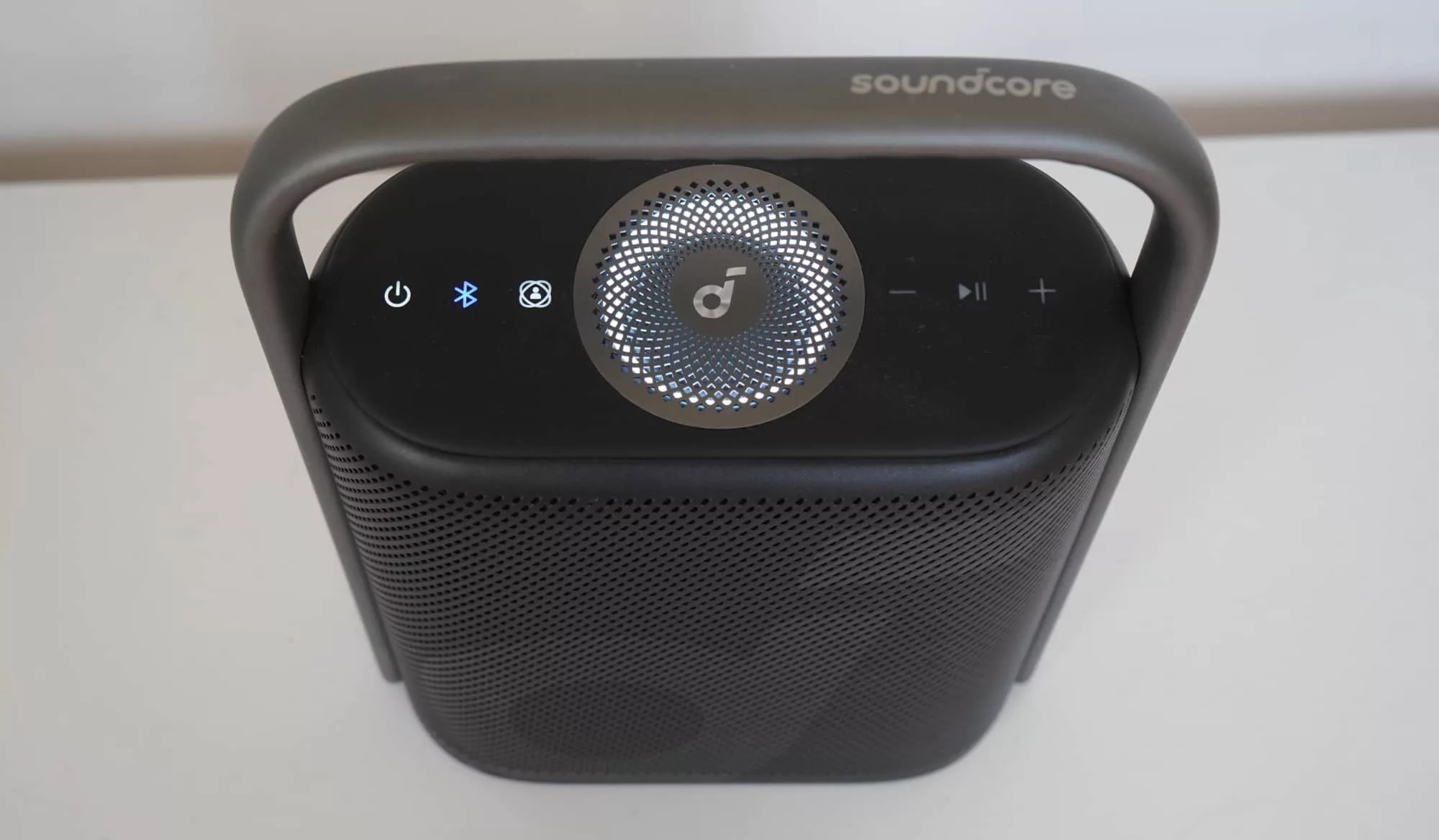
Battery
Whatever mode you decide to use, you’ll find up to 12 hours of battery life, a runtime which could be better, to be honest. Twelve is fine, sure. It’s not fantastic, but it’s fine.
We suspect our time with the upward firing driver pulled back the battery slightly, as well, but fortunately the whole thing is charged on USB-C, so it’s not a major issue. Type C USB is everywhere now — even the latest iPhones use it — so recharging doesn’t take much.
One point worth noting is that the battery in the speaker does hold onto its charge for quite a while. If you let the speaker gather dust without use for a month or two (which we sure did), it will switch on without any issues.
Value
Priced at $279 but more often than not found closer to the $180 mark, the Soundcore Motion X500 isn’t badly priced at all for what’s on offer.
Speakers obviously cover a range of price points, and that’s true of portable speakers, too. With the Motion X500, Soundcore has hit a relatively normal price point for portable speakers, fetching similar price points to what you can find with the UE Boom 4 and Bose SoundLink Flex, but offering a little more in the size package.
Overall, it feels like you’re getting more for the same price, which can only be a good thing.
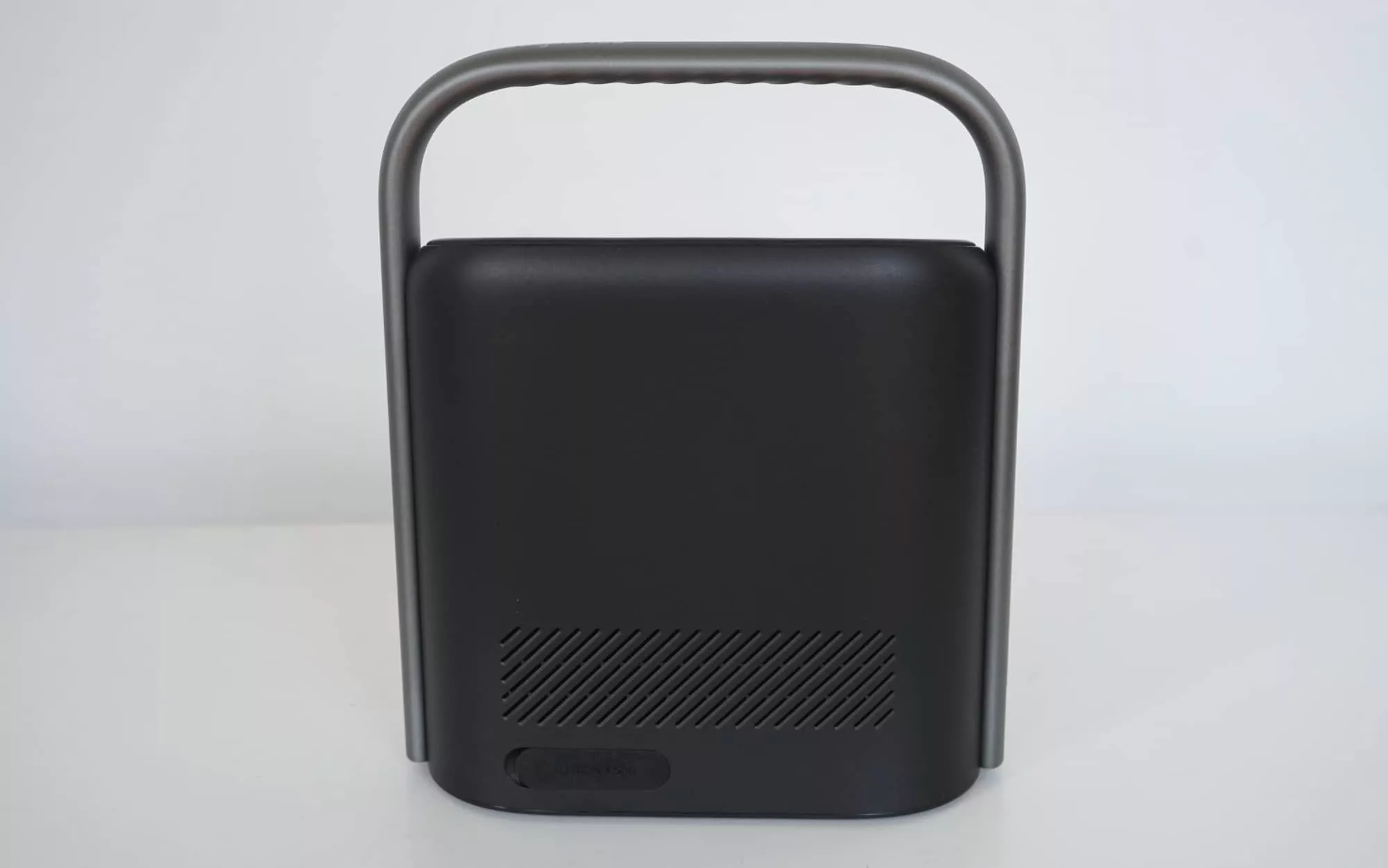
What needs work?
There are things that need work, though, such as that handle which could move, but doesn’t.
Or even the spatial capability, which is virtual-ish, but lacks the actual support for any of the known spatial standards. No, there’s no Dolby Atmos, DTS:X, or even the Sony standard no one really talks about (sorry Sony).
Or maybe it’s the lack of equaliser settings, something that Soundcore’s app typically caters to, but feels let down by in the X500 speaker.
You do get a button up top for EQ settings, but it just jumps between two spatial modes and the standard mode, noted by the colour of the speaker up top: white for spatial signature, light blue for spatial dynamic, and yellow for “Soundcore Classic”. It’s something, sure, and you can change the colours, but you’re not given a lot of sound settings. There’s a customisable EQ, of course, but you kind of need to know what you’re doing, and we’re not sure everyone will.
It could even be the omission of input options, which feels like a sticking point given the Bluetooth light and button at the top of the speaker. You’re given a dedicated pairing button for Bluetooth, even though the X500 only supports Bluetooth.
You can’t even use that big ol’ speaker as a charger for your phone, which is one of those things we typically see on big speakers, such as the sizeable models produced by Aussie competitor BlueAnt.

Final thoughts (TLDR)
Despite these points, there’s still something to consider in this portable offering. The Soundcore Motion X500 is a Bluetooth speaker, and it really doesn’t try to be anything else. That’s not a bad thing, but in today’s competitive world of wireless speakers — of which there are many — it is a factor all the same.
If what you’re after is cost-effective sound to go, and you’ve been curious about the whole spatial thing but not game enough to try, Soundcore’s Motion X500 delivers an intriguing option worthy of your attention. This is a competitor to consider.
